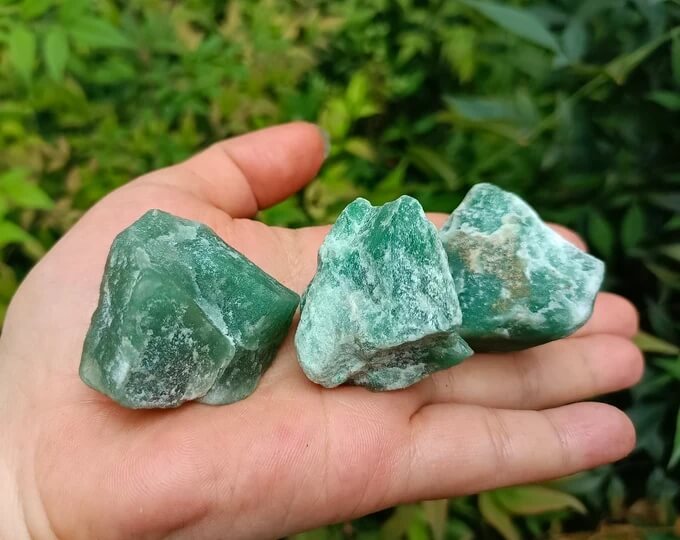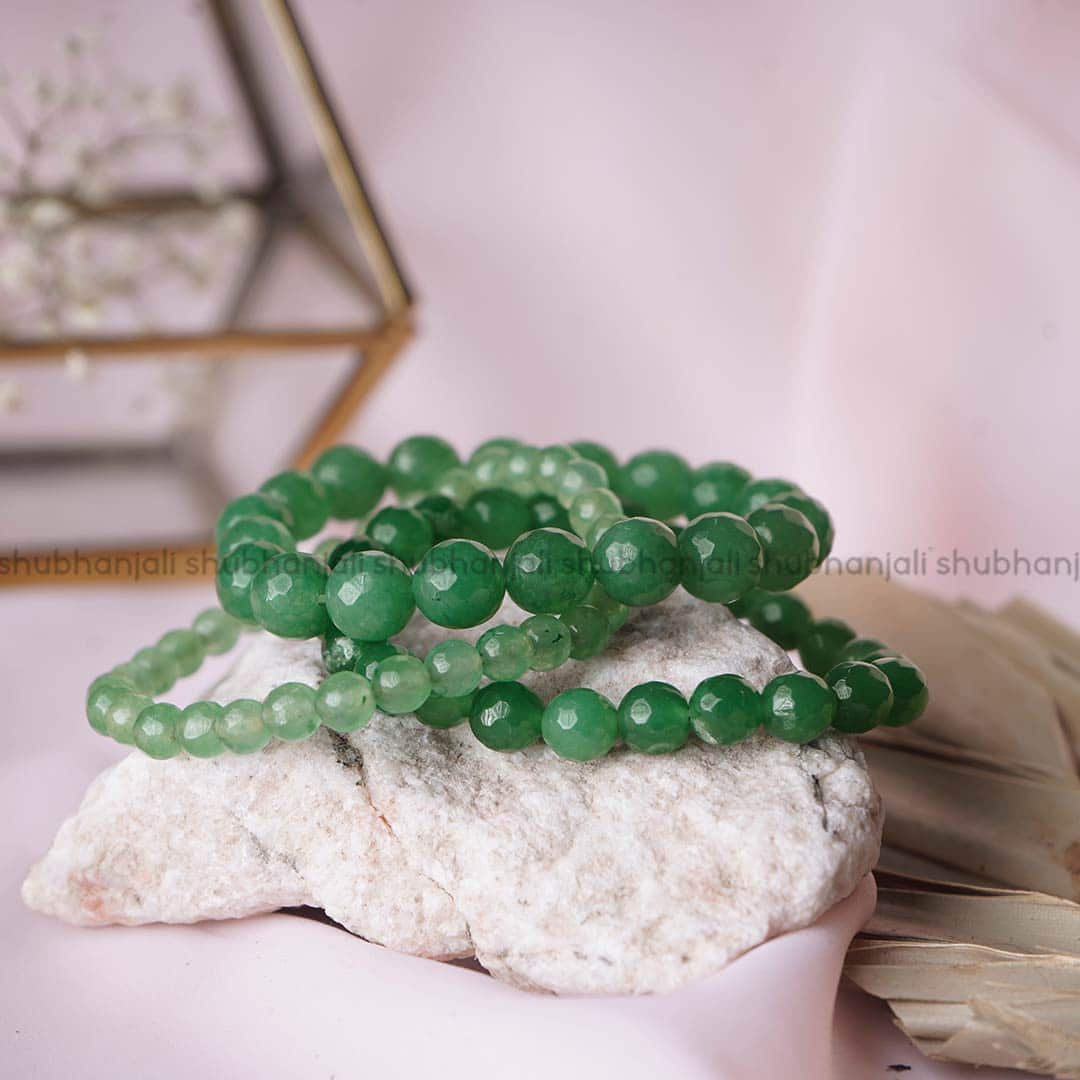7 Things to Know About Green Aventurine: Meaning, Properties & Where to Find It

If you've ever come across a sparkly green stone that seems to shimmer when the light hits it just right, chances are you've met green aventurine. This beautiful gemstone is more than just eye-catching—it has a rich geological background, a strong spiritual following, and real appeal for collectors, jewelers, and rockhounds alike.
In this article, we'll walk through everything you need to know about green aventurine in a simple, easy-to-understand way. You'll learn what makes it special, where it comes from, how to find it, and why so many people love keeping it in their collection. Whether you're into crystals, geology, or just love beautiful stones, there's something in here for you.
Let's dig in.
1. What Is Green Aventurine?
Green aventurine is a type of quartz that stands out for its sparkly surface and rich, green color. What gives it that special shimmer? A mineral called fuchsite, which is a kind of mica that reflects light and gives the stone its glittering quality. This effect is known as aventurescence—a word that even sounds magical.
People often confuse green aventurine with jade or other green stones, but once you've seen it up close, you'll start to recognize its unique look. It's usually semi-translucent, meaning a little bit of light passes through it. And thanks to the flecks of fuchsite, it often looks like it's sprinkled with glitter or stardust.
This stone isn't rare, but that doesn't make it any less special. It's found in a few places around the world and is loved not just for its appearance, but also for what it's said to represent—prosperity, growth, and luck.
2. The Geological Formation of Green Aventurine
From a geological point of view, green aventurine is part of the quartz family, which means it's made mostly of silicon dioxide (SiO₂). But unlike plain quartz, green aventurine contains inclusions—tiny particles of other minerals—that give it its unique look. In this case, those inclusions are mostly fuchsite, a chromium-rich mica that reflects light in just the right way to create sparkle.
Aventurine forms when silica-rich fluids cool down slowly in the Earth's crust. During this process, fuchsite and other materials become trapped inside the forming quartz. Over time, pressure and heat help shape the stone into the sparkly green gem we know today.
Most green aventurine falls between 6.5 to 7 on the Mohs scale, making it relatively tough and scratch-resistant. This makes it ideal for polishing into jewelry, tumbling for collectors, or carving into decorative objects.
Because of its mineral composition, green aventurine often occurs in metamorphic rocks, particularly in areas with high levels of mica and quartz. This can include regions rich in schist or gneiss—types of rock that undergo a lot of pressure and change deep underground.
3. Green Aventurine's Healing and Metaphysical Properties
Green aventurine isn't just a pretty face—it's also one of the most popular stones in the metaphysical world. Many people who collect crystals believe that this gem carries strong energy related to luck, opportunity, and emotional balance.
Some call it the "Stone of Opportunity," and it's often used in rituals or meditation to attract prosperity. Whether you're hoping to land a new job, grow your savings, or just invite more positivity into your life, this is a go-to crystal for manifestation work.
It's also strongly connected to the heart chakra, which is believed to govern love, compassion, and emotional healing. Some say that carrying or wearing green aventurine can help calm nervousness, ease emotional wounds, and open your heart to new connections.
In meditation, people place it on their chest or in their hands to help clear emotional blockages. Others keep it in their pocket throughout the day as a gentle reminder to stay open, kind, and balanced.
Even if you're skeptical about metaphysical claims, there's something comforting about holding a cool, smooth piece of green aventurine in your hand. The weight, the color, and the shimmer all seem to have a calming effect.
4. Where Is Green Aventurine Found?

Green aventurine is found in several countries, but some of the best-known sources are India, Brazil, and Russia. India, in particular, produces most of the green aventurine you see in stores today. The mines in southern India supply beautiful stones that are tumbled, carved, or polished for sale around the world.
Brazil also produces large quantities of quartz, including aventurine in a range of colors. Russian deposits, especially in the Ural Mountains, are known for high-quality specimens.
In the United States, green aventurine is less common but not impossible to find. It has been reported in places like California, Vermont, and Oregon, often in areas with quartz and metamorphic rock formations.
If you're a rockhound hoping to find green aventurine in the wild, your best bet is to start in quartz-rich areas. Look for metamorphic rocks with a high mica content, especially where green or shimmering materials appear. Some state and national parks, public land sites, and private pay-to-dig mines may offer opportunities to collect stones that include aventurine.
Just make sure to always follow local laws. Collecting rocks isn't allowed everywhere, and some sites are protected or require permits. When in doubt, check with local rockhounding clubs or geological surveys for guidance on where to search legally.
5. How to Identify Green Aventurine in the Field
Identifying green aventurine isn't too hard once you know what to look for, but it's easy to confuse it with other green stones if you're not careful.
The first thing to notice is the color—a deep to medium green that may look a bit translucent. What really sets it apart is its shimmer, caused by tiny mica particles inside the stone. This is the aventurescence effect we talked about earlier.
Hold the stone up to the light or tilt it in your hand. If it sparkles in a soft, metallic way, that's a good sign it could be aventurine. The glitter is often more subtle than something like glitter glue—it's more like a faint twinkle across the surface.
You can also look at the texture and hardness. Aventurine is relatively smooth when polished, but in its raw form it may feel slightly grainy. It's harder than many other green stones, so it won't scratch as easily. If you have a steel nail or a piece of glass, you can do a simple field scratch test. Aventurine should be hard enough to scratch glass but not be scratched by a steel blade.
Don't confuse green aventurine with jade, which tends to be waxier and more opaque, or amazonite, which has more of a teal-blue tone and doesn't sparkle in the same way. Green quartz might look similar, but if it lacks shimmer, it's probably not aventurine.
The more you handle different stones, the easier it becomes to tell them apart. If you're unsure, bring it home and examine it under good lighting, or take it to a local rock shop for identification help.
6. How to Use and Care for Green Aventurine Crystals
Green aventurine is a versatile stone, which makes it popular for everything from jewelry and meditation tools to home décor and crystal grids.
If you're into crafting, it's great for making pendants, bracelets, or wire-wrapped rings. The stone's smooth polish and moderate hardness make it easy to work with, and its bright color pairs well with silver or copper settings.
People who use it for spiritual or emotional wellness often carry a tumbled piece in their pocket, sleep with it under their pillow, or place it near their workspace. Some even keep a green aventurine figurine or palm stone near houseplants or in the garden, believing it encourages natural growth.

Caring for green aventurine is simple. Clean it with warm water and mild soap, and dry it with a soft cloth. Avoid using harsh chemicals or ultrasonic cleaners. Although it's relatively tough, aventurine can still chip or crack if dropped on a hard surface.
It's also a good idea to keep it out of prolonged direct sunlight. Over time, too much sun can cause the color to fade slightly. If you're storing your crystals, wrap them in a soft cloth or keep them in a padded box.
For those who like to energetically "cleanse" their stones, green aventurine can be rinsed in natural water, placed on a windowsill during a full moon, or set next to selenite or clear quartz to refresh its energy.
7. Is Green Aventurine Valuable? What Determines Its Worth
Green aventurine is considered a semi-precious stone, and while it isn't extremely rare, it does hold value, especially to collectors and those who love working with natural crystals.
The price of green aventurine varies based on a few factors. Color is one of the biggest. Stones with a deep, rich green and even shimmer tend to be more desirable. If the color is pale or the shimmer is faint, it may be considered lower grade.
Size and clarity also play a role. Larger, unbroken pieces with few internal fractures are worth more, especially if they're suitable for carving or jewelry. Inclusions that sparkle (like fuchsite) add value, but if they appear cloudy or uneven, that can reduce a stone's appeal.
In general, tumbled green aventurine stones might sell for a few dollars each. High-quality carvings or jewelry pieces can cost anywhere from $20 to $100, depending on the craftsmanship and material.
Of course, for many people, the real value isn't in the price tag—it's in how the stone makes them feel or the story behind how they found it. That's especially true for rockhounds who discover green aventurine in the wild. Knowing you found a piece yourself often makes it priceless.
Final Thoughts: Why Green Aventurine Is Worth Exploring
Green aventurine may not be the rarest gem out there, but it holds a special place in both the geological world and in people's hearts. With its unique shimmer, deep green color, and rich symbolic meanings, it's no surprise that this stone has remained popular for centuries.
Whether you're a seasoned rockhound, a beginner crystal collector, or someone who just likes learning about the natural world, green aventurine offers something meaningful. You can admire its natural beauty, explore its history, or use it as a reminder to keep growing and stay open to opportunity.
And who knows? The next time you're out in a quartz-rich area, you might just stumble across a sparkly green stone that turns out to be a real gem—literally.
